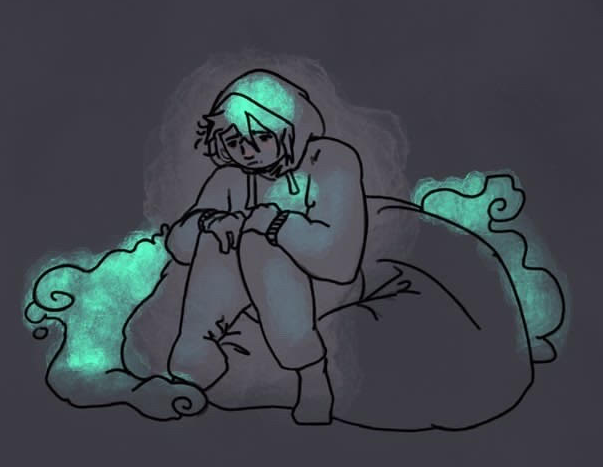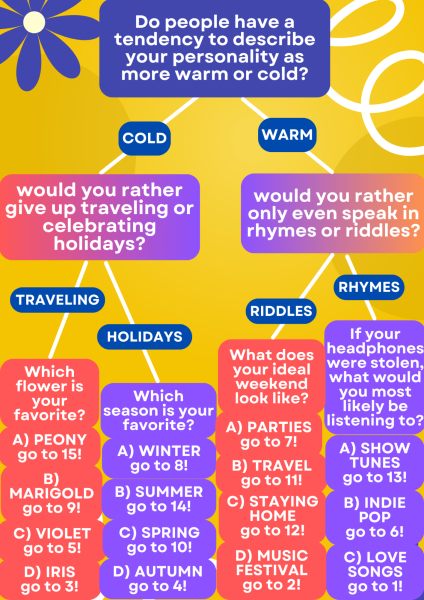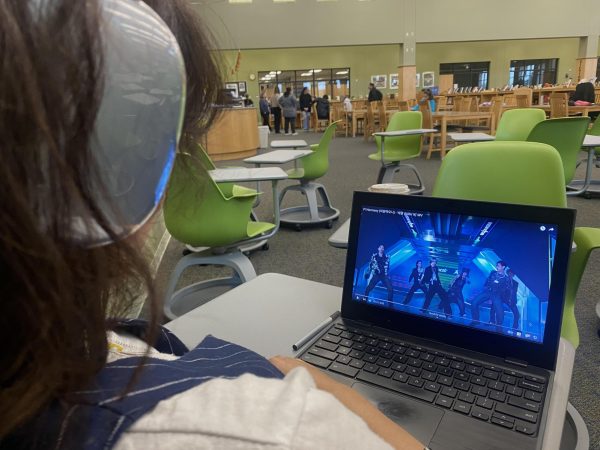Is the American Dream still alive?
September 17, 2020
The American Dream is dead
By Kaylyn Aulick
Life coach Tony Robbins likes to say “Your past does not equal your future.” For many areas of life, he may be right. Family, relationships, depression, anxiety. They are all escapable. Maybe it takes time and effort, but there is a way out. What about socioeconomic class? Is it escapable? Is it still possible for a child to grow into an adult with a higher income than their childhood? Is the American Dream still in reach?
The answer is no. When it comes to the American Dream, Robbins is wrong. Your past equals your future. Here are three numbers that prove it.
500: The percent college costs have risen from 1985 to 2012.
College is expensive, and the cost is constantly rising. However, the overall Consumer Price Index has only risen by 115 percent in the same amount of time. Inflation cannot be avoided, but college costs are rising much more quickly than other goods.
Nelson Mandela said “It is through education that the daughter of a peasant can become a doctor.” The problem comes when the daughter of a peasant can’t pay for her education. With college costs rising so quickly, it is becoming more and more impossible for lower income families to afford. In the end, the daughter of the peasant doesn’t become a doctor, and she and her family continue where they have always been.
While scholarships are available to help pay for college, they are offered to the students who perform. Students need good grades and good SAT scores. According to the Washington Post, “Students from families earning more than $200,000 a year average a combined score of 1714, while students from families earning under $20,000 a year average a combined score of 1326” in 2014. Socioeconomic class is directly tied to SAT scores, making it even harder for the students who need scholarships most to receive them.
42: The percent of American men who lived in the bottom 20 percent of incomes during childhood and adulthood.
If lack of accessibility to education isn’t enough, this displays the difficulty people born into lower incomes have of rising in socioeconomic class. Why? “Well if they just worked harder they would be able to make a change.”
If that were true would the number still be so high? No. Working hard has little to do with it, but paying for opportunities does. Going to interviews is a very important part of getting accepted into medical schools. So what if the medical school is hundreds or even thousands of miles away from home? A high income family could help pay for the cost of plane tickets. Could a low income family do the same?
And say, rather than medical school, the goal is to study music at Northwestern University. An audition is required as part of the acceptance process. Going to the audition would include paying for any necessary travel as well as a hotel room in Chicago, which is not cheap. Many low income families can not afford those kinds of costs, as much as they may want to. Most families wouldn’t even consider the school a possibility. The American Dream is impossible for low income families. Hard work does not change that.
50: The percent chance of one earning more money than his or her parents as an adult.
If the American Dream means a rise in socioeconomic class, then it doesn’t matter which socioeconomic class the child comes from, low, middle, or high. According to this statistic, few children from any class make more money than their parents. This number alone tears apart the existence of the Dream.
Numbers always add up. And these numbers concluded that the American Dream is dead.
The American Dream is alive
By Alyssa Karner
The American Dream is dead!?!
Tell that to the 2019 Panther Award winner, Angel Verdusco. Tell that to the 2018 Panther Award winner, Micheal Griffor. Tell that to any of the last five Panther Award winners at West Ottawa High School.
But also, try telling that to 50% of the children in Somalia who have only received two years of education, if that. Tell that to the student in India who’s hard work in school is pointless because of the still prevalent caste system.
The American Dream is the belief that anyone, regardless of where they were born or what socioeconomic class they were born into, can accomplish their own version of success. It is the dream that in America, upward mobility is possible for everyone.
While the American Dream is somewhat relative, the bottom line is there is the opportunity to achieve your own success through perseverance and hard work.
If the opportunity did not exist, explain Griffor’s story. Griffor was the winner of the 2018 Panther Award at West Ottawa High School. The Panther Award is an award given annually to a member of the senior class who the administration and counseling staff believes has overcome many obstacles. During the 2018 convocation, former West Ottawa principal Todd Tulgestke explained these obstacles and the perseverance Griffor demonstrated.
Griffor grew up in a single-parent household and lived in poverty. Drinking, partying, domestic violence and other issues led to his mother’s loss of employment and further poverty. Between first and third grade, Griffor was moved to and from six different living arrangements and five different elementary schools.
By the age of eight, Griffor knew that he was from a broken home and that life would be tough. His mother was loving but struggled with addiction, substance abuse, and poor choices.
With his family living paycheck to paycheck, asking for anything that involved money was an unspeakable idea. One Christmas in his middle school years, he remembers his friends heading off to places like Florida and Jamaica. The only gift he received was a single new pillow, nothing more.
He remembers being shocked when he went to his friends’ houses to see that they had more snacks in a single pantry than he had seen in his entire life.
Tulgestke explained, “These experiences ingrained in Micheal a drive to want more for himself and his family. He knew what he wanted for his own family, for his future children and he knew the solution began with his education.”
With the help of teachers, he became focused on school. He wanted to get good grades, and he wanted to go to college.
So that is what he did.
Statistically, a minority male from a low-income single-parent home, who was constantly moved between schools, would not graduate on time. The statistics show he would certainly not be accepted to and attend college.
Nonetheless, Griffor graduated on time on May 24, 2018 and is currently attending Michigan State University on multiple scholarships to study health sciences. In America, Griffor’s hard work and perseverance earned him a high school degree and set him on a path to success. And Griffor is certainly not the only one whose hard work paid off.
If the American Dream is dead, explain Verdusco’s story. Verdusco was the 2019 Panther Award winner. When Verdusco was eight years old, he watched his parents be taken from his house by immigration enforcement. Family friends came to care for Verdusco and his siblings and explained that his parents were being deported to Mexico.
From this point forward, Verdusco had to deal with going back and forth between Mexico and Holland. With the constant moving from school to school, Verdusco struggled each year to earn credits.
During the 2019 convocation, Principal Jason Reinecke explained, “He was becoming a statistic. Parent deportation at eight years old, constant transition between homes, behind in credit, and a feeling of helplessness, the world tells us that Angel would never graduate high school and would never go to college.”
Yet, Verdusco graduated from West Ottawa High School on time on May 23, 2019, and is currently attending Western Michigan University.
If the American Dream is dead, how is it that these young men attained success?
As Griffor told Tulgestke, “Where you come from does not have to impact where you are able to go in life and what you are able to do.” This is the American Dream. And Griffor achieved it. The dream is alive and people like Griffor are living proof.
These cases are not isolated. In fact, according to a survey conducted in 2017 by Pew Research Center, 83% of Americans believe they have achieved or are on their way to achieving the American Dream.
However, if the setting of these stories changed, would the outcome be the same?
In Somalia, a small country in Africa, there would be no success story. Ranking as one of the world’s lowest enrollment rates, only 30% of children are in school and only 40% of these children are girls according to the United Nations Children’s Fund. There are extremely high rates of poverty in communities all across Somalia, which makes it difficult for parents to afford school fees.
The youth of Somalia have no hope for success without access to education. As Griffor mentioned, he knew that his key to success and building a better life for himself was through his education. Take away his right to education and he would have no control over his future.
The Indian caste system, although outlawed in 1948, continues to have devastating effects on society. At the lowest of the system are the Dalits or “untouchables.” Today, descendants of the Dalit castes are still facing the worst discrimination, violence, along with a lack of opportunities as they are still seen as “untouchable.”
The discrimination is so terrible that there have been horrific reports of violent murders against Dalit members. One report by the New York Times said that a 14-year-old Dalit girl was beheaded by an upper-caste man simply because of her caste.
With the current discrimination and inequality, social mobility in India is not equally distributed. Dalit groups have less than half the upward social mobility compared to the upper castes, according to a 2016 study by The University of Manchester.
Held back by their caste, there is little hope for members of the lower castes to attain success and a better life for themselves. The right attitude, perseverance, and hard work can only take a person so far in a country where their last name identifies them as “untouchable.”
In America, there is undoubtedly discrimination and inequality. However, there are still opportunities for those facing discrimination. There is still the opportunity for a minority child to get an education. There is still the opportunity for a child from a low socioeconomic class to work hard and be the first in their family to graduate college.
Compared to other countries, Americans have opportunities. Because these opportunities exist, the dream exists. In America we have a choice, we can chase these opportunities and pursue the dream, or not. In other countries, that choice doesn’t even exist.











